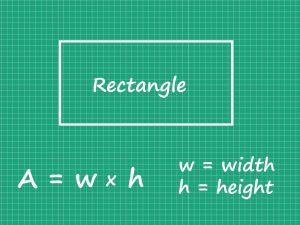Key Concepts:
- Solve addition equations with fractions.
- Solve subtraction, multiplication, and division equations with fractions.
Introduction:
Solving equations with rational numbers:
You can solve equations with fractions and mixed numbers the same way that you solve equations with whole numbers: using inverse relationships and properties of equality to isolate the variable.
For example, let us see a subtraction equation.


4.5.1.1 Solve addition equations with fractions
Example 1:
Joyce needs to swim a total of 8 miles this week. So far, she swam 5 ⅜ miles. Find how many more miles Joyce needs to swim.

Solution:
Use a bar diagram to show how the qualities are related and to write an equation.

5⅜ + m = 8
Solve for m.
5 ⅜ + m = 8
5 ⅜ + m – 5 ⅜ = 8 – 5 ⅜
m = 8 – 5 ⅜

m = 7 ⁸∕₈ – 5 ⅜
m = 2 ⁵∕₈

Example 2:
Billy carved 3 ⁵∕₉
feet of a totem pole of 6 feet. Find the remaining length of the totem pole.

Solution:
Use a bar diagram to show how the qualities are related and to write an equation.

3 ⁵∕₉ + h = 6
Solve for h.
3 ⁵∕₉+ h = 6
3 ⁵∕₉ + h – 3 ⁵∕₉ = 6 – 3 ⁵∕₉

h = 6 – 3 ⁵∕₉
h = 5 ⁹∕₉ – 3 ⁵∕₉
h = 2 ⁴∕₉

4.5.1.2 Solve subtraction, multiplication, and division equations with fractions
Example 3:
Use inverse relationship to solve the following subtraction equation.
a – 4 ⅜ = 2 ½
Solution:
a – 4 ⅜ = 2 ½
a – 4 ⅜ + 4 ⅜ = 2 ½ + 4 ⅜

a = 2 ½ + 4 ⅜
a = 6 ⁷∕₈
Example 4:
Use inverse relationship to solve the following multiplication equation.
²∕₇ x = 18/5
Solution:
²∕₇ x = 18/ 5
(7/2) ²∕₇ x = (7/2) ¹⁸∕₅

x = ⁷∕₂ × ¹⁸∕₅
x = ¹²⁶∕₁₀ or ⁶³∕₅ or 12 ³∕₅
Example 5:
Use inverse relationship to solve the following division equation.
f/2 = ⁵∕₈
Solution:
f/2 = ⁵∕₈
²∕₁.¹∕₂f = ²∕₁ . ⁵∕₈
f = ²∕₁ . ⁵∕₈
f = ¹⁰∕₈ or ⁵∕₄
Exercise:
- Henry worked at a car wash for 6 hours. For 3 hours, he vacuumed the interiors of the cars. For the other part of his shift, he collected money from customers. For how many hours did Henry collect money?
- Solve the following equation.
⁵∕₉y = ¼ - Solve the following equation.
s + ¼ = 12 ½ - Solve the following equation.
a – 4 ³∕₈ = 2 ½ - Solve the following equation.
²∕₇ q = 3 ³∕₅ - Solve the following equation.
⁷∕₁₀ = x – ³∕₅ - Solve the following equation.
9 = ³∕₈y - Solve the following equation.
x/3 = ⁶∕₉ - Solve the following equation.
²∕₇ = y/12 - Is the solution of w ×¹¹∕₁₂ greater than or less than 19? How can you tell without solving the equation?
What have we learned:
- Solve addition equations with fractions by using inverse relationships and properties of equality.
- Solve subtraction, multiplication, and division equations with fractions by using inverse relationships and properties of equality.
Concept map:

Related topics
Addition and Multiplication Using Counters & Bar-Diagrams
Introduction: We can find the solution to the word problem by solving it. Here, in this topic, we can use 3 methods to find the solution. 1. Add using counters 2. Use factors to get the product 3. Write equations to find the unknown. Addition Equation: 8+8+8 =? Multiplication equation: 3×8=? Example 1: Andrew has […]
Read More >>Dilation: Definitions, Characteristics, and Similarities
Understanding Dilation A dilation is a transformation that produces an image that is of the same shape and different sizes. Dilation that creates a larger image is called enlargement. Describing Dilation Dilation of Scale Factor 2 The following figure undergoes a dilation with a scale factor of 2 giving an image A’ (2, 4), B’ […]
Read More >>How to Write and Interpret Numerical Expressions?
Write numerical expressions What is the Meaning of Numerical Expression? A numerical expression is a combination of numbers and integers using basic operations such as addition, subtraction, multiplication, or division. The word PEMDAS stands for: P → Parentheses E → Exponents M → Multiplication D → Division A → Addition S → Subtraction Some examples […]
Read More >>System of Linear Inequalities and Equations
Introduction: Systems of Linear Inequalities: A system of linear inequalities is a set of two or more linear inequalities in the same variables. The following example illustrates this, y < x + 2…………..Inequality 1 y ≥ 2x − 1…………Inequality 2 Solution of a System of Linear Inequalities: A solution of a system of linear inequalities […]
Read More >>Other topics











Comments: